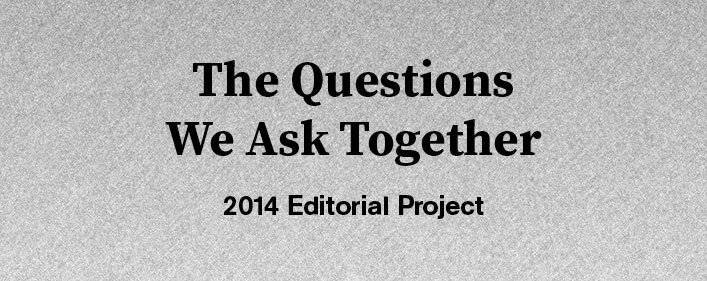Does social practice have ethical responsibilities that other (art) practices don’t?
One of the greatest problems facing social practice is the way in which individual artists envision and frame their community work. The White bourgeois liberal dominance of art and White academic bourgeois liberal dominance of social practice is becoming increasingly problematic in the community realm as so many artists avoid and make invisible their own: institutional power, educational backgrounds, and race and class privileges. I believe holding those positions is a driving force behind the kinds of questions that get asked and the kind of people who are the targets of socially engaged art. This might explain the proliferation of “White Savior Industrial Complex” projects that plague the field of social practice. Many projects simply avoid contextualizing the artist within the oppressive structures of society that produce the problems their work seeks to overcome. Additionally, by making race and class privilege invisible these social practitioners actually conceal areas of neo-liberalism that if understood better could lead to liberation for the people they target with their work.
One of the most pressing questions is why target poor and working class people of color for social practice art? Is it because they obviously need the most help in our society? Okay, why do they need the most help? What structural issues can we cite or injustices have occurred to produce a situation whereby poor and working class people of color need the most help? Why does our nation have a surplus of poor and working class people of color who Whites with liberal arts degrees can help? It’s obvious that social practice lacks sound political analysis and critique of: political economy, neo-liberalism, global finance capital, and White privilege, coupled with fugitive sensitivities for power, race, class, gender, and sexuality. The approaches that artists take and the questions they pose often fall short because the artist is so obsessed with identifying victims and “helping” poor marginalized people “heal” that they cannot see how their work could be a counterforce to neo-liberalism.
Today’s social practice artist has an increased responsibility as she engages Others. If artists want to behave like teachers, social workers, and activists they must adhere to higher ethical standards than artists who work alone. The work has to be knowledgeable, reflective, and critical. There is an amazing book in the field of education by Lisa Delpit called Other People’s Children: Cultural Conflict in the Classroom. In the book we learn of a teacher’s struggle to teach indigenous populations in Papua New Guinea and Alaska. We follow the author as she reflects on a series of complex challenges and misunderstandings around power, race, class, and language learning. In the classroom and in the community, Delpit struggles with teaching English language dominance and privilege to marginalized children of color. As a language teacher of color Delpit understands aspects of Othering and feels especially guilty and complicit in a curriculum designed at assimilating marginalized youth to American “English Only” language formations that essentially serve the power that dominates them. Of course there is much more to Delpit’s work, but her text reminds us of the incredible responsibility we have when working with “Other people’s children” and how we can serve our own commitments to social justice through the subjects we teach.
My hope is that social practice community work will expand its discourse to include more diverse voices of critique and seek out scholarship like Delpit and so many others. Social practice might examine its work closely and ask itself why it always asks the same questions around the White Savior Industrial Complex and how it might position itself politically to attack roots causes of social issues instead of providing temporary feel-good solutions that aid neo-liberalism.
About the contributor: W. Keith Brown is a Chicago-based art educator, writer, and researcher. In the past, Brown has been an editor and writer for the Illinois Art Education Association, Stockyard Institute, and the Critical Visual Art Education Club. His writing has appeared in two books and a handful of local, national, and international publications and writing projects. He has taught in Chicago schools and communities. He currently serves as Director of Education at the Evanston Art Center where he co-manages a contemporary art discussion group, the artist-in-residence program, art school, community partnerships, and public education programs. Brown uses critical pedagogy, social justice, and education knowledge to expand his thinking on contemporary art history, theory, and criticism. evanstonartcenter.org
